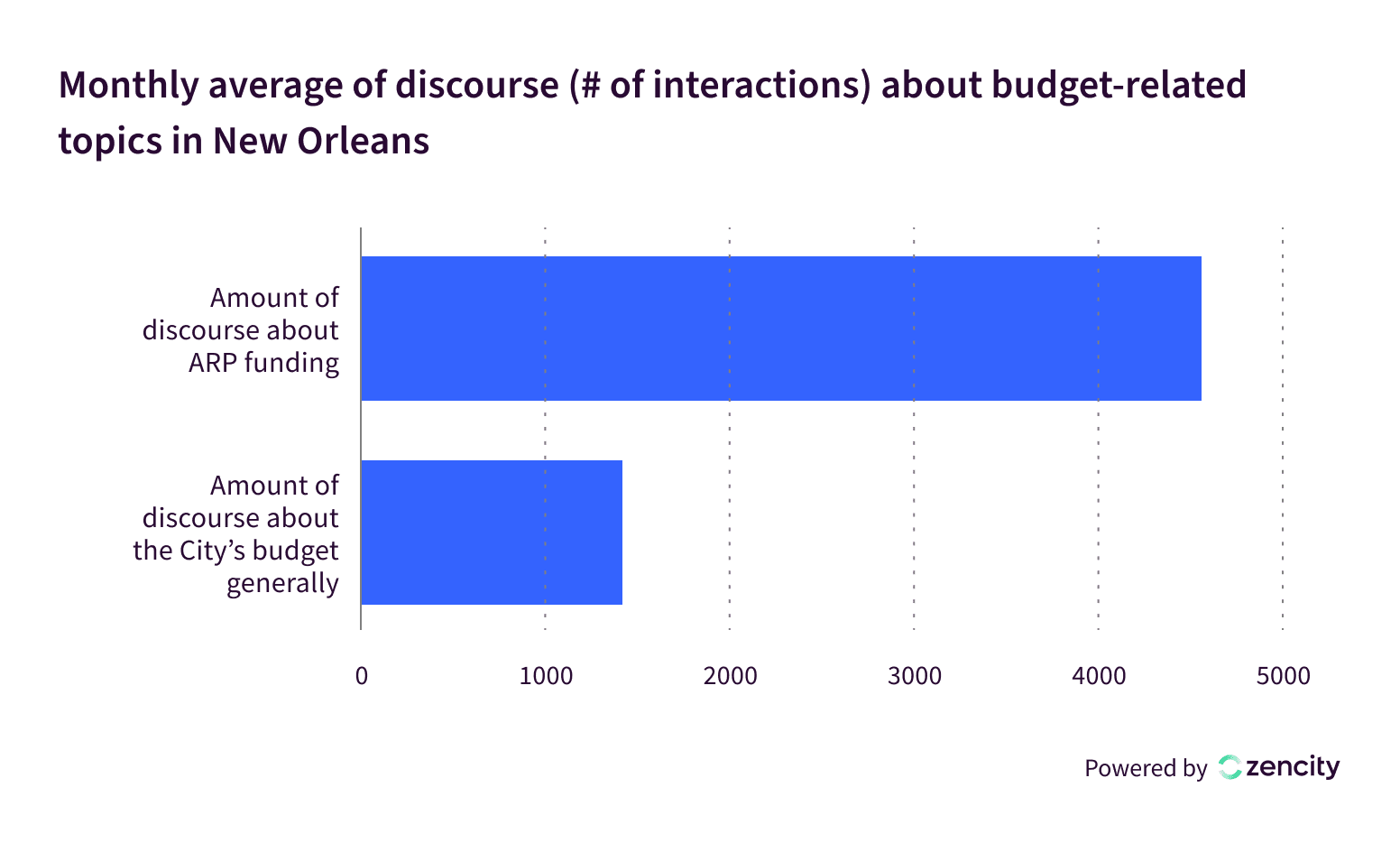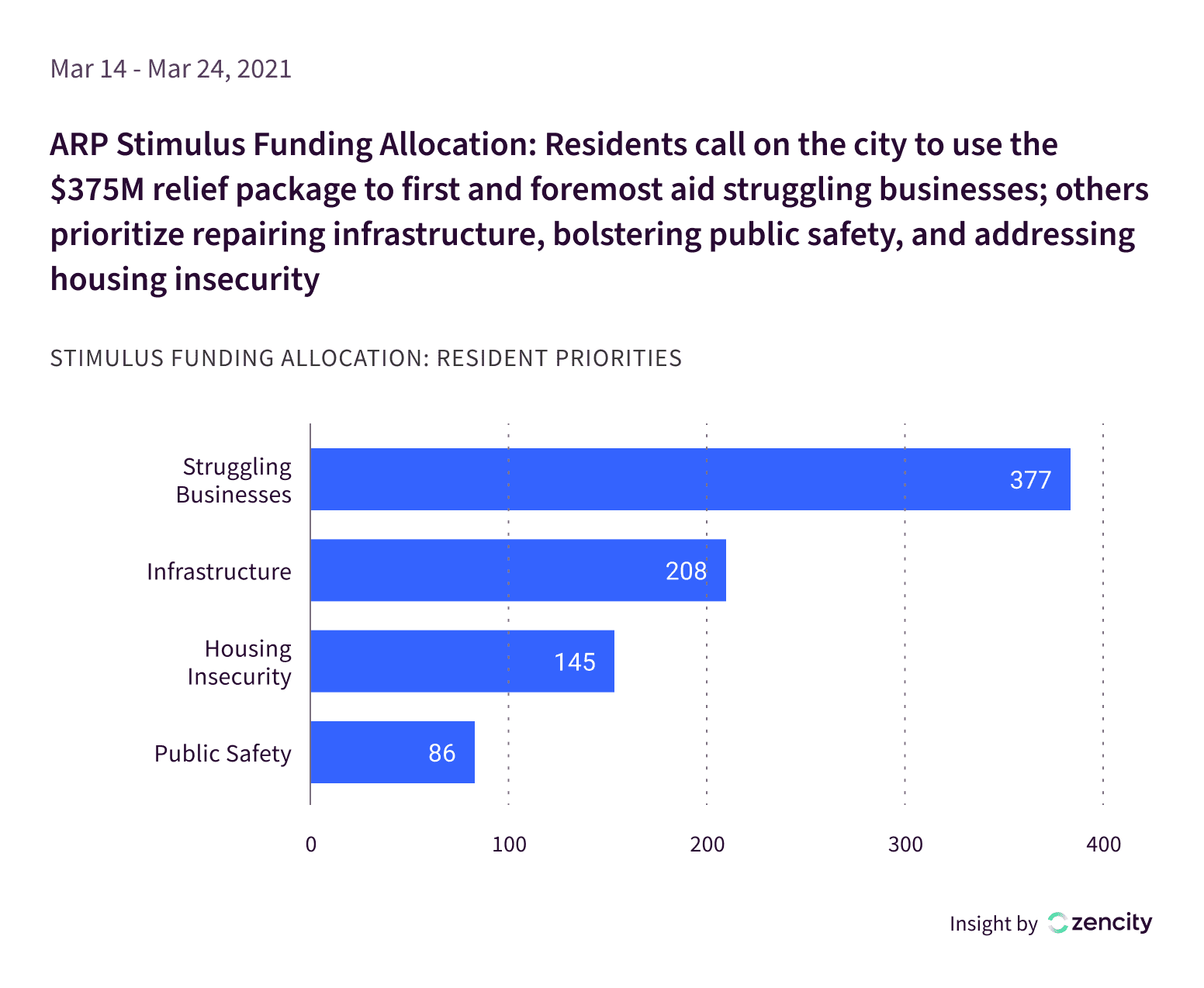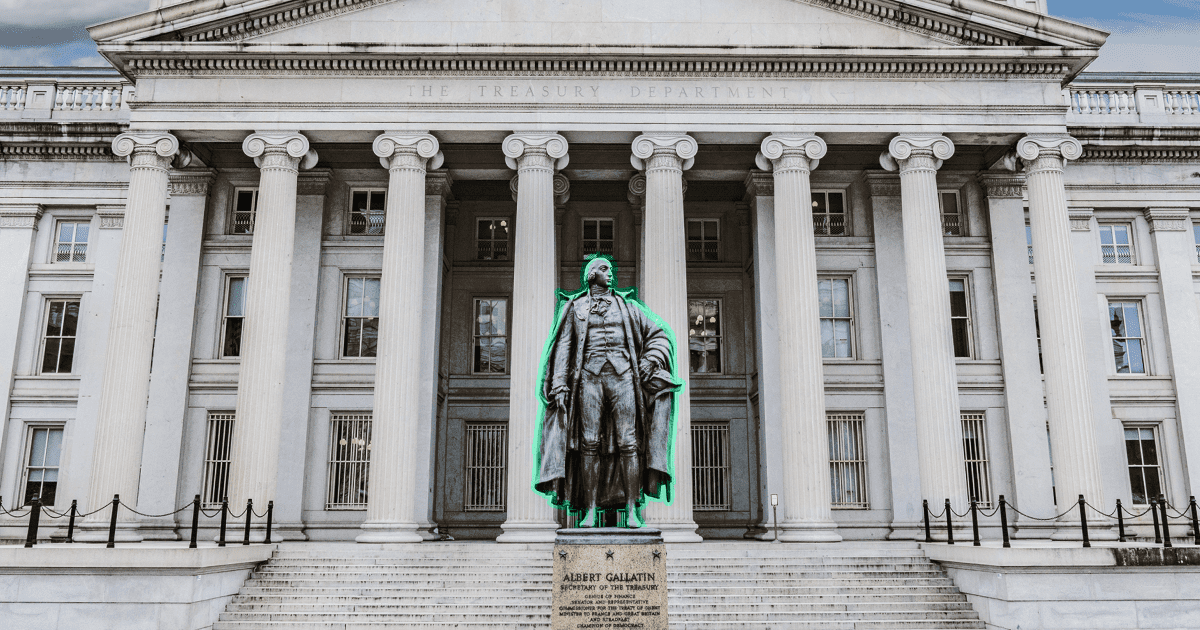Part II: Why Citizen Engagement around ARPA Funds is a Must
.png)
Zencity
The Platform for Community Trust
Resident scrutiny of ARPA funds is higher than ever - making citizen engagement a must
Community engagement can both inform good policy and help us ensure federal aid programs don’t miss the mark or get misconstrued – Lafayette, LA – case in point. More than that, however, community engagement is a must when it comes to American Rescue Plan Act (ARPA) funding because, unlike run-of-the-mill local government budget processes, residents have a heightened awareness of the millions of dollars very necessarily pouring into their communities. Very visible sums of money that come into the community generate conversation and discourse – considerably more so than ongoing budgetary discussions.
With higher scrutiny and attention dedicated to the funds coming in and their intended uses, cities should expect increased citizen engagement and involvement – and higher visibility of every decision made. One great example comes from the City of New Orleans.
When news hit mid-March that the City is being granted $375 million in ARPA funds, residents had a lot to say. In fact, the ARP funding generated 3X the monthly average of interactions than ongoing discourse about the city budget.

Zencity analyzed the community’s response to the announcement – similarly to how we analyzed the debut of Lafayette’s rental assistance program – providing insight for City officials into their residents’ needs, priorities, and concerns.
First off, the sheer amount of discourse made it clear that residents were thinking deeply about this funding and the benefit it could have on their communities. Of course, to the public less familiar with city budgets, $375M sounds like quite a lot, but New Orleans city officials know that they are facing a much larger shortfall of the next five years, and investing this funding strategically is critical to the long term health of the City.
A breakdown of resident discourse indicated the New Orleanians have strong ideas of where funding is most needed. Zencity’s data analysts identified the top four priority areas expressed: First and foremost small businesses, with specific repeat mentions of restaurants, bars, and the entertainment industry. Then infrastructure needs – specifically road, water, drainage, and sewage systems. Public safety was the third-highest resident priority including suggestions of increasing police and firefighting forces. And finally, housing insecurity. Residents’ explicit discussion of where federal funding should go highlights that residents are watching, they’re invested, and they’re passionate about infusing their communities with relief.

Another interesting learning point from NOLA’s discourse analysis is the level of understanding residents have of the federal funding available to the City. Online discussions of ARP relief focused almost exclusively on the $375M, and didn’t look at the additional $1.9 trillion potentially available to local governments in the bill. New Orleans city government created its Stimulus Command Task Force specifically to figure out how it can tap into maximum federal resources, and then allocate based on the total resources. What this means is that residents’ less nuanced understanding of federal funding might not translate into how the City spends its $375M. It also highlights the need for City leadership to be proactive in managing expectations about the City’s direct allocation.
Finally, Zencity’s insight into how residents responded to the ARP funding announcement underscored that the City is facing trust issues and that cynicism and skepticism towards federal aid are real. This isn’t news to many City employees who know that much of the distrust in the community is a result of corruption in the aftermath of Katrina. Nor is this trust issue unique to New Orleans. It’s a theme we’ve seen emerge in many communities where residents are skeptical of how their local leaders will spend the federal relief aid heading their way. Being able to truly understand and measure community concern around government spending and transparency is critical to New Orleans and many local governments as they move forward, strategically allocate funding, align expectations, and build back.
%20copy-1.png?width=544&height=120&name=Logo_black%20(1)%20copy-1.png)



